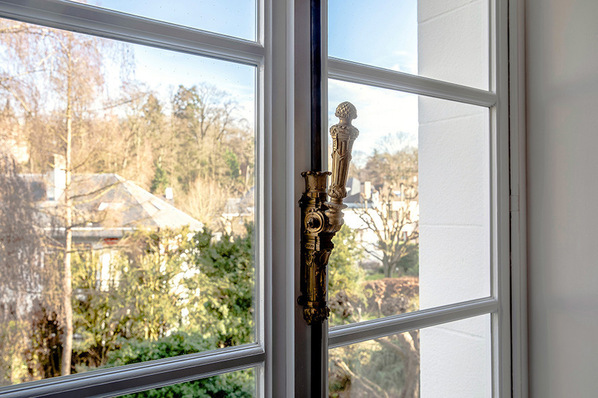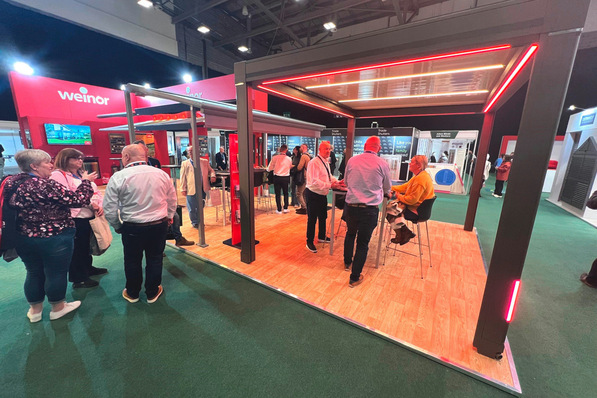GW News - Which projects place high safety demands on XXL glass?
Sebastian Dengg - Glass panes of 6 × 3.21 metres and more are not uncommon today. Such large formats are used in commercial construction, high-quality private houses and public buildings. Since people and corresponding values are to be protected here, laminated glass with proven burglary resistance is in demand. The demands on these glasses in terms of statics, appearance, etc. are high. If security requirements are added to this, the insulating glass must become a high performer.
GW News - Where do you see potential obstacles?
Dengg - Experience has shown that one sticking point is the integration of XXL glass with the required and also sensible resistance class into the frame system. Tested RC2, RC3 or RC4 frame systems are more common. However, tested large-format glass that can be installed in such a frame system is less common. This is because the individual glass thicknesses must of course be increased according to the static requirements. The result is thicker and heavier glass structures. If burglar resistance or actually bullet resistance is added, the insulating glass unit becomes even thicker and heavier. The consequence in practice: all too often, effective and sensible security glass is dispensed with because it cannot be accommodated by the frame system.
[Panoramic glazing is becoming increasingly popular with home owners]
The installation of XXL glass, which quickly weighs over one ton, can also be challenging, as can burglar resistance. Resistance classes P4A and P5A have much lower security properties than are required for such projects. Effective burglar resistance starts from resistance class P6B. One should consider the interaction of all parts of the system, not just the individual components. That is, the glass must be properly glazed, the frame must be properly anchored in the masonry, etc. If electronic intrusion protection is desired, with alarm glass, lock monitoring, motion detectors, etc., this must also be considered and integrated in the overall concept.
GW News - What advice do you give to facade builders?
Dengg - First of all, don't go out on a limb and sell a security concept or change an existing one. This should only be done by experienced and certified consultants, because they usually consider the entire security concept, including the connecting trades. After all, what use is a filigree slider if the installed glass is the weak point in the burglary protection concept?
When looking at such a sliding element, one should bear in mind that up to 99 % of the surface consists of glass - and that should not be able to be broken through within a few seconds. Even if it is not possible for the burglar to get through or manipulate the internal hardware, the frame loses a massive amount of rigidity when a standard glass is broken. This makes it much easier to attack the frame.
My advice for facade builders: Work with companies that can provide you or your customers with a project-specific burglary protection concept and have experience with glass as well as glazing. Only work with tested laminated glass. These are also available in comparatively low thicknesses and weights, so that they can be integrated into many frame systems or are actually tested with them.
GW News - Do you have any other tips?
Dengg - Yes. Before a facade builder forgoes effective safety glass ‘out of necessity’ and installs a serious safety gap for his customers, he should talk to experienced suppliers or consultants to find a suitable glass. At the end of the day, it is not only a matter of a high liability risk that can end up in criminal proceedings under civil law for the processor, it is above all a matter of protecting the people in the building.
The interview was conducted by Matthias Rehberger













